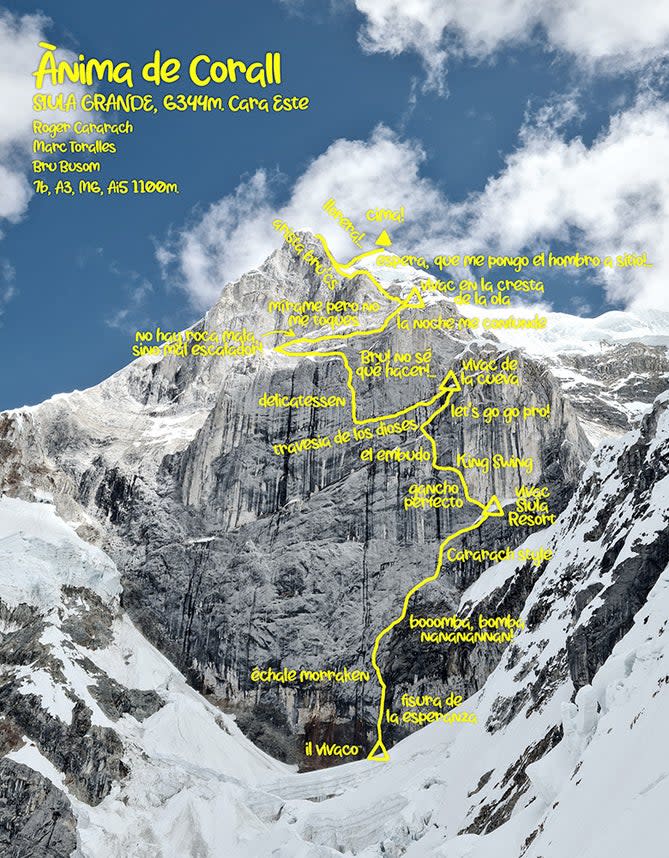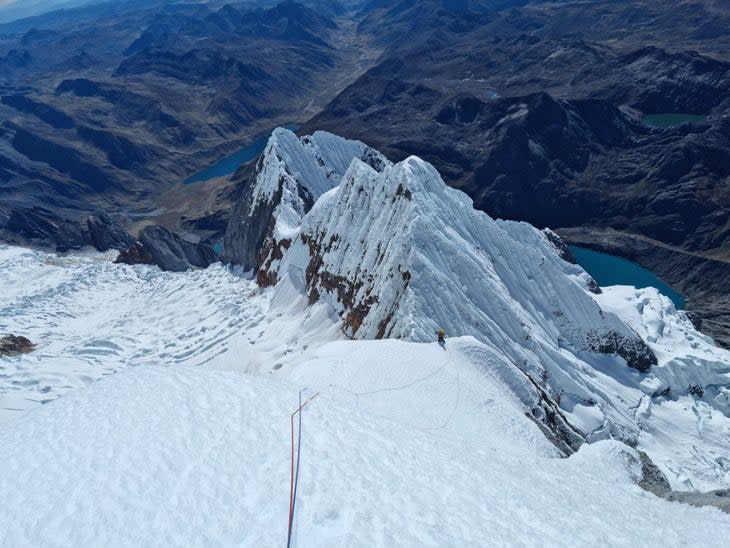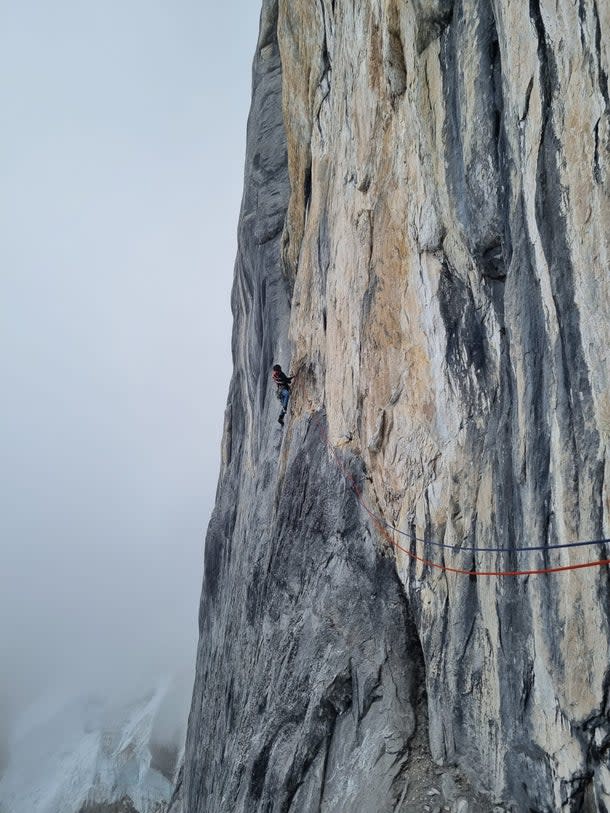The Terrifying East Face of Siula Grande Sees First Ascent
Climbing
The Catalan climbers Bru Busom and Marc Toralles have made a coveted first ascent of Siula Grande's (20,485 feet) East Face in the Cordillera Huayhuash, Peru. Their route, Anima de corall (5.12a A3 AI 5 M6; 3,600 feet), went down in a six-day push from July 11 to 16.
Busom and Toralles first tried the face in 2019, with Roger Cararach, who was struck by rockfall early in the ascent and broke his arm. Rockfall was a major theme of this ascent too, and to limit their exposure to the exfoliating face they chose to climb during the afternoons and night--once the morning's sun was off the wall. "[That was] the crux of the route," Toralles told Climbing in an email. "We were afraid every day, since we were always waiting for a stone to fall."

Busom and Toralles hauled packs up the lowest, steepest part of the East Face, where the rock was solid and compact, and mainly free climbed utilizing secure (though not always generous) features. "Due to [the rockfall], there was always sand on the grips and feet," Toralles said. "It makes you not comfortable at any time. [And] the protection, at some points, was complex because pitons were placed while free climbing and the aid pitches [required] hooks."
The lower headwall ended and the duo switched to alpine-style climbing, each with a backpack and flowing up the comparatively easier, though much looser, terrain. A beautiful snow ridge, a requisite element of any Peruvian alpine ascent, led them to Siula Grande's summit.

Busom and Toralles rappelled the East Face which Toralles described as "also very tense, especially the upper part where it was difficult to [establish] a safe [anchor]. During a rappel, one of the two anchor pieces came loose, leaving us hanging only from a piton of dubious quality." Several rappels necessitated such faith in less-than-perfect rock, one of the worst elements of alpine climbing to be sure, and while one rappelled the other would unclip himself from the anchor in the not-unlikely event of anchor failure. "This [was] the first time that I do not want to return to a route that I have climbed,” Toralles later told Planetmountain. "[It was] the most demanding climb we have done to date, due to the difficulty and exposure that we had to deal with throughout the entire climb. We do not dare to quantify the commitment of the route, but in many moments our successful outcome depended entirely on luck.”

Many will recognize the name Siula Grande for its role in the book and film "Touching the Void," about Joe Simpson and Simon Yates's first ascent of the West Face and their epic descent. After Simpson falls off a short cliff and badly breaks his leg, Yates begins lowering him down the 3,000-foot face with their two ropes tied together. "[Yates] lowered me off the edge and I came to a stop with about 100 feet of air and the shadow of a covered crevasse beneath me," Simpson told The Red Bulletin. "The knot had reached his friction device. My weight was on the rope and he couldn't get the knot over; we were locked into the system and going to die. [Yates] hung on for what seemed like a lifetime, then I found myself free falling." "Touching the Void" is a story best read in its entirety, not hastily summarized here, but it would appear that both Siula Grande's East and West Faces put up a damn good fight.

Anthony Walsh is a digital editor at Climbing.
For exclusive access to all of our fitness, gear, adventure, and travel stories, plus discounts on trips, events, and gear, sign up for Outside+ today.]]>

